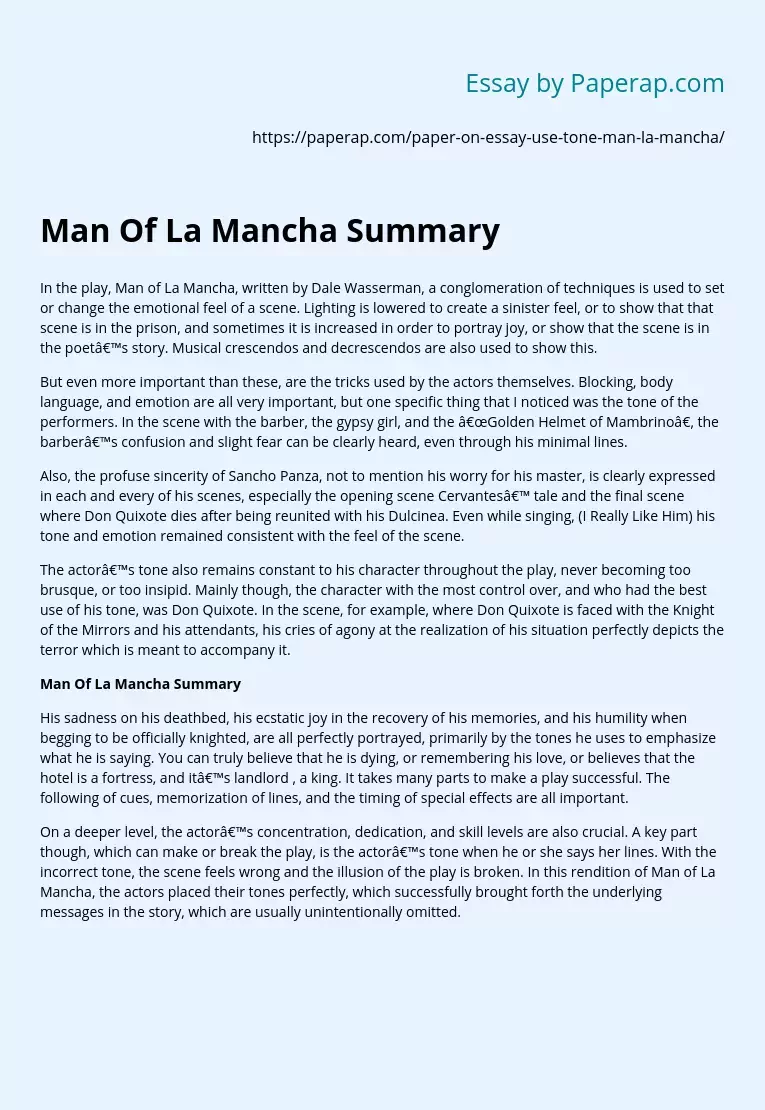Man Of La Mancha Summary
In the play, Man of La Mancha, written by Dale Wasserman, a conglomeration of techniques is used to set or change the emotional feel of a scene. Lighting is lowered to create a sinister feel, or to show that that scene is in the prison, and sometimes it is increased in order to portray joy, or show that the scene is in the poet’s story. Musical crescendos and decrescendos are also used to show this.
But even more important than these, are the tricks used by the actors themselves.
Blocking, body language, and emotion are all very important, but one specific thing that I noticed was the tone of the performers. In the scene with the barber, the gypsy girl, and the “Golden Helmet of Mambrino”, the barber’s confusion and slight fear can be clearly heard, even through his minimal lines.
Also, the profuse sincerity of Sancho Panza, not to mention his worry for his master, is clearly expressed in each and every of his scenes, especially the opening scene Cervantes’ tale and the final scene where Don Quixote dies after being reunited with his Dulcinea.
Even while singing, (I Really Like Him) his tone and emotion remained consistent with the feel of the scene.
The actor’s tone also remains constant to his character throughout the play, never becoming too brusque, or too insipid. Mainly though, the character with the most control over, and who had the best use of his tone, was Don Quixote. In the scene, for example, where Don Quixote is faced with the Knight of the Mirrors and his attendants, his cries of agony at the realization of his situation perfectly depicts the terror which is meant to accompany it.
Man Of La Mancha Summary
His sadness on his deathbed, his ecstatic joy in the recovery of his memories, and his humility when begging to be officially knighted, are all perfectly portrayed, primarily by the tones he uses to emphasize what he is saying. You can truly believe that he is dying, or remembering his love, or believes that the hotel is a fortress, and it’s landlord , a king. It takes many parts to make a play successful. The following of cues, memorization of lines, and the timing of special effects are all important.
On a deeper level, the actor’s concentration, dedication, and skill levels are also crucial. A key part though, which can make or break the play, is the actor’s tone when he or she says her lines. With the incorrect tone, the scene feels wrong and the illusion of the play is broken. In this rendition of Man of La Mancha, the actors placed their tones perfectly, which successfully brought forth the underlying messages in the story, which are usually unintentionally omitted.
Man Of La Mancha Summary. (2019, Dec 05). Retrieved from https://paperap.com/paper-on-essay-use-tone-man-la-mancha/

